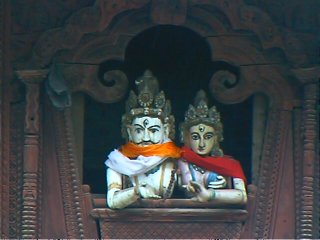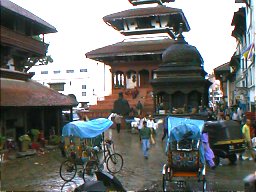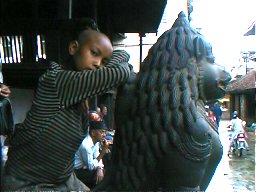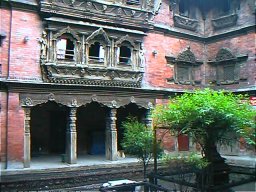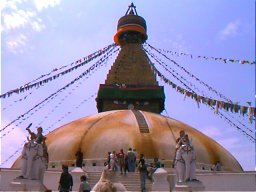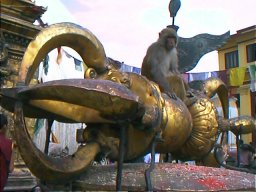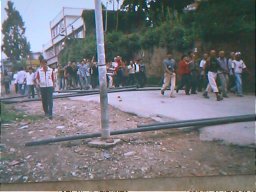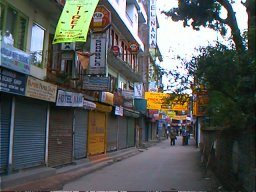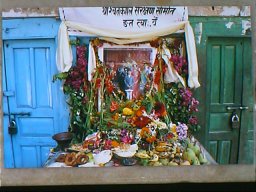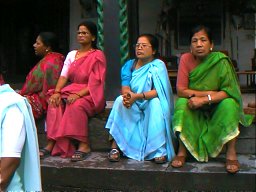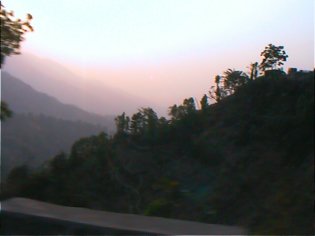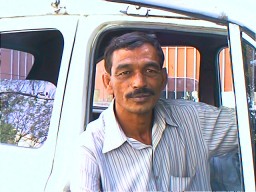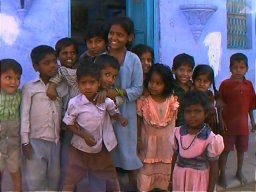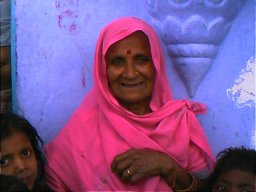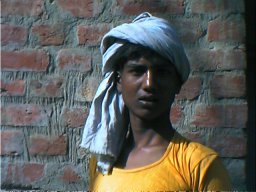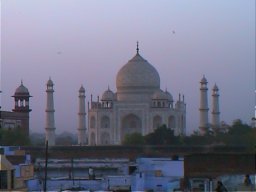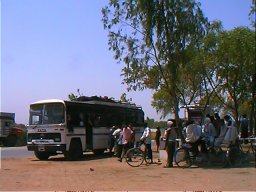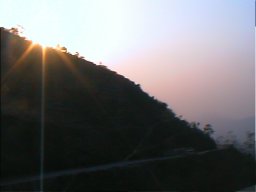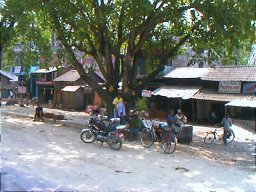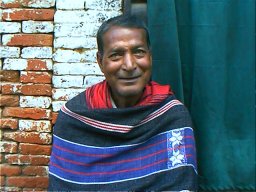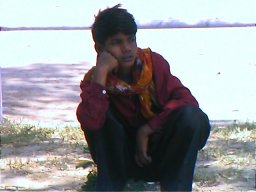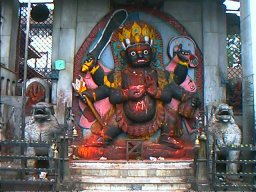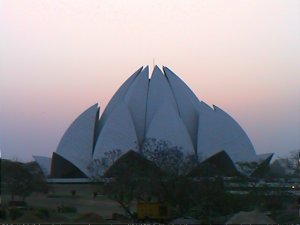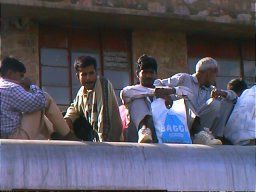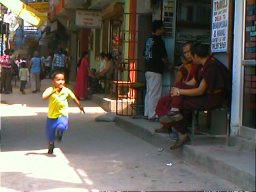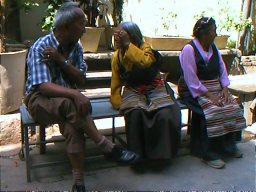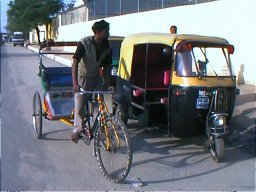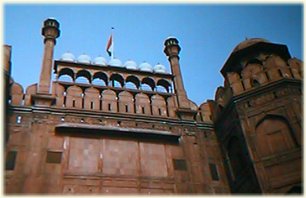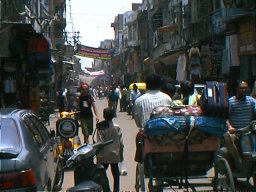New Delhi India
Delhi spread out over the west bank of the Yamuna river and has its own historic values. Delhi developed itself as historic city old delhi and modern metro city New Delhi.
Look at the traditions and cultural values at Old Delhi where Muslim shopkeepers in Chandni Chowk, Turbaned Sikhs, colorfully dressed Rajasthani and Gujarati women, Tibetans and Ladakhis in the street stalls, Janpath and Kashmiris in the handicrafts emporims around Connaught Place, all added different colours of Indian culture at one place called Delhi. Along with tall moderns buildings, posh residential colonies and busy commercial places can be seen along with the ancient historical and heritage monuments. In some places it can be also seen as jam-packed with heavy dirty traffic, dirty beggars around the traffics, black Yamuna river, street magicians, pick pockets, local transportation buses in bad conditions and their dirty conductors and driver, crowded buses, people
It has fashion centers, boutiques and shopping malls shops and store for traditional and contemporary Indian crafts and handicrafts from all over the country. Old Delhi
Known for its crowded markets and roads, thousands of traditional buildings and monuments standing and witness of past 100s of years have been changed the city face.
Shahi Mosque, sikh’s Gurudwaras temples of Hindus and Jians, Jama Masjid, Red Fort, Delhi Gate and old iron Yamuna Bridge built by britishers, still standing however its working time period has already expired but still it is in working condition, rust free, it is a sample of intelligent and quality architecture.

Delhi India ! Delhi is the capital of India, it is known as old delhi and new delhi, Old Delhi known for its historical values, and New Delhi known for its modernity, the famous tourist destinations are Red fort, Humayun's Tomb, Jama Masjid, Old fort, India Gate, Lotus temple, Jantar mantar, Qutub Minar, Chandni Chowk.

Location: North Center of India
Famous As: Capital of India
Delhi History: Shahjahan decided to shift his capital from Agra to New Delhi.
State: New Delhi, India
'Old' Delhi, “the heart of Delhi” was the capital of India between the mid-17th and late 19th centuries, is full of awesome forts, mosques and monuments. Old Delhi is a lively area of colourful bazaars, narrow streets and hardly controlled confusion. In contrast, New Delhi, the grand city created by the British Raj, is balanced of spacious, tree-lined avenues and striking government buildings, and has a sense of order. Tourists to Delhi get two cities Old Delhi and New Delhi for the price of one.
Attractions & Places in Delhi - India
New Delhi is an international metropolis with excellent tourist spots, recreational facilities, and a history that goes back to antiquity. There are several beautiful and historic architectures and places to see. New Delhi covered with green trees and gardens which are amazing part of New Delhi. New Delhi is also a dream city for visitors looking for items of handicrafts, not only the rich artistic crafts of its own craftsmen but also of craftsmen from all over the country. New Delhi offers a huge number of interesting places and attractions to the tourist.
Red fort, India Gate, Jama Masjid, Old Fort, lotus temple, Humayu Tomb, Safdarjang Tomb, Several Dargah, Parliament House, National Zoological park, Chandni Chowk Bazar, Canaught Place, Janpath, Qutub Minar and several other monuments and places.
New Delhi Tourist Attractions
New Delhi is an international metropolis with excellent tourist spots, recreational facilities, and a history that goes back to antiquity. There are several beautiful and historic architectures and places to see. New Delhi covered with green trees and gardens which are amazing part of New Delhi. New Delhi is also a dream city for visitors looking for items of handicrafts, not only the rich artistic crafts of its own craftsmen but also of craftsmen from all over the country. New Delhi offers a huge number of interesting places and attractions to the tourist.
Rashtrapati Bhawan
New Delhi centers around the Rashtrapati Bhawan This graceful building is a very impressive architectural building standing at a height, is truly worth seeing, for its historic significance and architectural beauty. The beautiful Mughal Gardens, which is open to the public in spring, is an added lure. Mughal Gardens is surely a place to see.
India Gate
India Gate a memorial decorated with the names of the brave Indian soldiers who laid down their lives in first World War. The evening at India gate is famous for its beauty with green lawns, standing trees in a queue and the attraction to see local crowd in the lawns at India Gate. A must visit beautiful place in New Delhi.
It is a history standing itself in Old Delhi with its proof. When Shahjahan decided to shift his capital from Agra to New Delhi, the decision for constructing the fort was taken in 1639. The Red Fort still retains some of its lost glory. The Red Fort was the last fort built in New Delhi. this royal building made of red sandstone is the location from where the Prime Minister of India addresses the nation every Independence Day
Raj Ghat
Raj Ghat On the bank of the renowned Yamuna river, which flows past New Delhi, there is Raj Ghat-the last resting place of Mahatma Gandhi, the father of the nation.
Shanti Vana
Lying close to the Raj Ghat, the Shanti Vana (literally, the forest of peace) is the place where India's first Prime Minister Jawaharlal Nehru was cremated. The area is now a beautiful park adorned by trees planted by visiting dignitaries and heads of state.
Qutab Minar
The Qutab Minar India is located at a small village called Mehrauli in South New Delhi. Qutub-ud-din Aibak built Qutub Minar during the reign of Sultan in 1199 A.D in Delhi-India.It is a fluted red sandstone tower, which tapers up to a height of 72.5 metres and is covered with intricate carvings and verses from the holy Qur'an. Qutab Minar India is a landmark of New Delhi and a place to remember history.
Laxminarayan Temple
Also called the Birla Mandir, the Laxminarayan Temple was built by the Birla family in 1938. It is a temple with a large garden and fountains behind it. The temple attracts thousands of devotees on Janmashtami day, the birthday of Lord Krishna.
Humayun's Tomb
Humayun’s Tomb Designed by a Persian architect named Mirak Mirza Ghiyas, and completed in 1556, the structure was a trendsetter of the time by remains a must visit place in New Delhi till date. Built by Humayun's wife, Hamida Begum, in 1556, nine years after Humayun's death, this elegantly balanced tomb, set on a platform amidst a garden, is believed to have influenced the design of the Taj Mahal.
Chandni Chowk
Chandni Chowk (India) remains Asia's largest wholesale market Chandni Chowk (India) the living legacy of New Delhi (India) is Shahjahanabad. Created by the builder of Taj Mahal (India), this city, with the Red Fort (India) as the focal point and Jama Masjid (India) as the praying centre, has a charming market planned, called Chandni Chowk (India). Shahjahan planned Chandni Chowk (India). It was divided by canals filled with water, which glisten like silver in moonlight. The canals are now closed.
Bahai Temple / Lotus Temple
The Bahai Temple, situated in South New Delhi, is shaped like a lotus.
Old Fort / Purana Quila
This is also a historic symbol standing itself to show its royalty. The Purana Quila is a good example of medieval military architecture. Purana Qila (India) Built by Humayun, the Purana Quila (India) is a monument of bold design, which is strong, simple and every inch a castle. It is different from the well planned, carefully decorated, and palatial forts of the later Mughal rulers. The main purpose of this fort was its utility, with less weight on decoration. The Qal'a-I-Kunha Masjid and the Sher Mandal are two important monuments inside the fort.
Jama Masjid
Built during the reign of the Mughal Emperor Shah Jahan, one of the largest mosques in India, the Jama Masjid's large courtyard, onion domes and central tank are built of red sandstone and white marble in the Indo-Islamic style.

 The flourishing temple styles in North India - both the Khajuraho and the Orissi versions - were brought to a rude end with the Muslim invasion. When the Muslims consolidated their hold over North India, temple-building activity virtually stopped. Entire families of skilled craftsmen were now presented with two choices - the first of which was to work for their new masters and abandon the idea of building a temple as an offering to God. This resulted in the fusion of Persian and Indian building styles and was to result in an entirely new idiom, as we shall see later.
The flourishing temple styles in North India - both the Khajuraho and the Orissi versions - were brought to a rude end with the Muslim invasion. When the Muslims consolidated their hold over North India, temple-building activity virtually stopped. Entire families of skilled craftsmen were now presented with two choices - the first of which was to work for their new masters and abandon the idea of building a temple as an offering to God. This resulted in the fusion of Persian and Indian building styles and was to result in an entirely new idiom, as we shall see later.  Gradually this hybrid evolved into an identifiable style, rivaling in grace and beauty its predecessors.
Gradually this hybrid evolved into an identifiable style, rivaling in grace and beauty its predecessors. 
 Not content with this little gem in Belur, the king commissioned an even larger and more magnificent temple in his new capital city of Halebid. The architect proceeded to lay out two identical temples, parallel and connected at their transepts.
Not content with this little gem in Belur, the king commissioned an even larger and more magnificent temple in his new capital city of Halebid. The architect proceeded to lay out two identical temples, parallel and connected at their transepts. 

